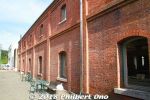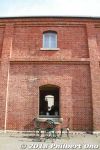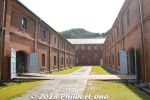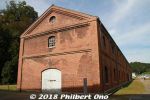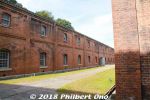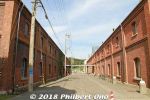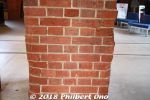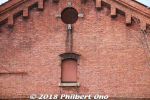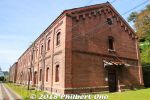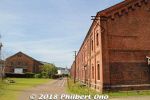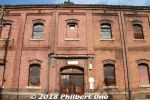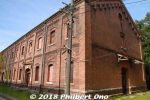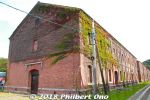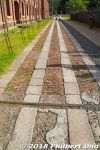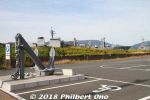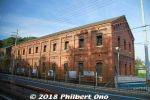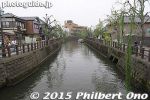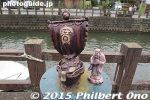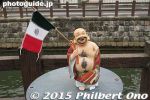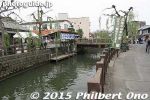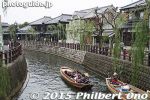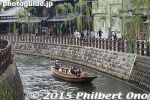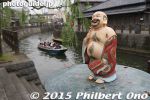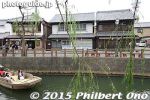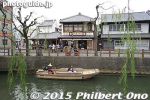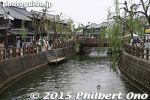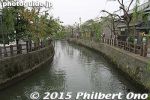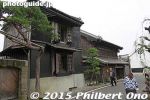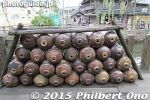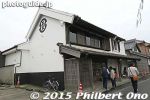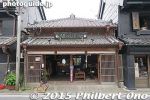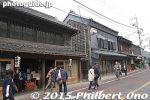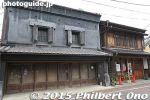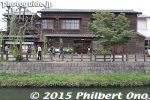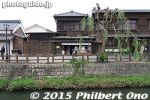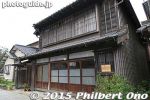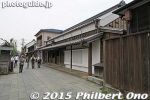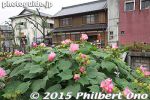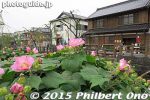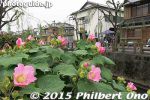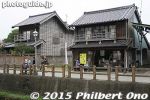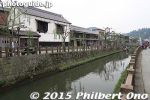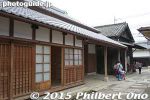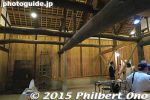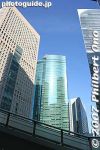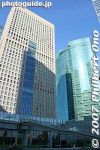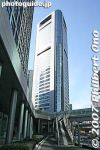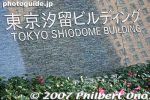 Image search results - "buildings" Image search results - "buildings" |

Shiodome skyscrapers overwhelm the little tea house
|
|
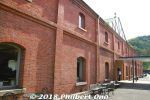
Opened in 2012, Maizuru Brick Park is a complex of 12 large brick buildings near the Japanese navy base. They were built from 1901 until the 1920s to store munitions (arsenal) for the Imperial Japanese Navy. Eight of the buildings are National Important Cultural Properties and a few of them have been renovated and opened to the public. This is the first building you enter, the Maizuru World Brick Museum (赤れんが博物館).
Hours 9:00 am–5:00 pm, closed Dec. 29–Jan. 1. 15-min. walk from JR Higashi-Maizuru Station (JR Maizuru Line and Obama Line). Parking available.
Map: https://goo.gl/maps/ZuFd1eXrNds
|
|
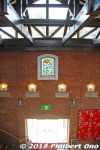
Inside the huge Maizuru World Brick Museum.
|
|
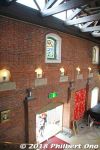
Very high brick wall.
|
|
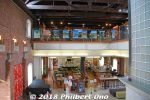
Inside the huge Maizuru World Brick Museum. It was used to store torpedoes made by munitions factories in Maizuru. Restaurant on the groundfloor, museum on the upper level.
|
|
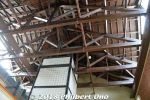
Ceiling of the huge Maizuru World Brick Museum.
|
|
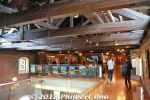
The museum is on the upper level.
|
|
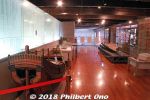
Maizuru World Brick Museum on the upper floor. Exhibits local historical artifacts. There's no English though.
|
|

Ancient dugout canoe found in Maizuru.
|
|
|
|
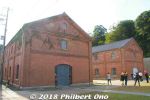
These brick buildings are not open to the public.Maizuru Brick Park, Kyoto Prefecture.
|
|
|
|
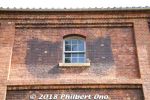
During World War II, the brick buildings were painted black to make them less noticeable. The black paint still remains here and there. Amazing that these buildings have survived. Maizuru's weapons factories and navy base got heavily bombed by American planes in July 1945, but not this arsenal.
|
|
|
|
|
|
|
|

Inside Brick Building No. 5 (赤れんが5号棟), the park's largest building. Built in 1918 to store torpedoes, depth charges, and mines. After the war, it was used by a warehouse company.Now used as an event hall and cafe space (cafe open only on weekends). It can be rented to hold exhibitions or events (concerts, weddings, etc.). It has been reinforced with these steel girders for earthquake resistance. National Important Cultural Property.
|
|
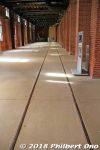
Brick Building No. 5 had rails.
|
|
|
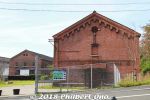
This part of the park had buildings owned by the Japanese government. Not open to the public.
|
|
|
|
|
|
|
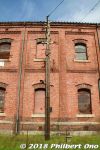
The brick park has been used as a backdrop in Japanese movies.
|
|
|
|
|
|
|
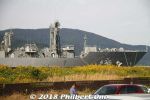
Maizuru Brick Park is right next to the Japan Maritime Self-Defense Force's Maizuru navy base.
|
|
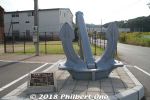
Old anchor for the Shirane destroyer that was retired in 2015.https://en.wikipedia.org/wiki/JDS_Shirane
|
|
|
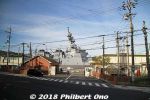
Japan Maritime Self-Defense Force's Maizuru navy base (舞鶴基地) where the Hyuga helicopter carrier, Aegis ship, and other navy ships are based.This base is in charge of maritime security along the Sea of Japan's coast from Yamaguchi to Aomori Prefectures.
|
|
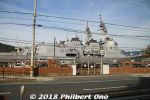
This is the Atago, a guided missile destroyer.
|
|

In central Otaru, the Ironai-dori and Sakai-machi-dori streets are lined with numerous historic buildings. Architecture buffs will love this street. This is the Otaru Unga Terminal, formerly Mitsubishi Bank's Otaru Branch.
|
|

Inside the Otaru Unga Terminal, formerly Mitsubishi Bank's Otaru Branch. This area is known as the "Wall Street of the North" due to the many banks and finance-related companies that were here.
|
|

Otaru Post Office
|
|

Wind chimes along a canal.
|
|

Former Hyakujusan Bank, Otaru Branch, now a large glassware shop. 旧百十三銀行小樽支店
|
|

Inside former Hyakujusan Bank, Otaru Branch
|
|

Former Takasaburo Natori Store, now the Taisho Glass Shop. 旧名取高三郎商店、大正硝子館
|
|

Inside Taisho Glass Shop 大正硝子館
|
|

Another glassware shop.
|
|
|
|

Former Motosaburo Kaneko Store, built in 1887. 旧金子元三郎商店
|
|

Konbu shop
|
|

Shop selling konbu or seaweed. The ceiling is covered with konbu.
|
|

Former Dai-Hyakujusan National bank, Otaru Branch, now a gift shop. 旧第百十三国立銀行小樽支店
|
|

Old fire hydrant
|
|
|
|

Glassware makers
|
|
|
|
|

Kitaichi Venetian Art Museum opened in 1988. Facade is modeled after the Palace of Grassi.
|
|

Inside Kitaichi Venetian Art Museum with a real gondola once ridden by Prince Charles and Princess Diana.
|
|

Gondola displayed in Kitaichi Venetian Art Museum. The art gallery charges 700 yen admission. Gift shop sells Venetian glass and masks.
|
|

Uroko fish market popular with tourists.
|
|

Uroko fish market
|
|

Hokke, 500 yen each
|
|

Crab
|
|

Trolley bus
|
|

Sakai-machi-dori
|
|

Kitaichi 北一
|
|

Inside Kitaichi
|
|
|

Marchen Intersection メルヘン交差点
|
|

Clock in front of the Otaru Orgel-do (Otaru Music Box Hall)
|
|

Plaque of Gastown Vancouver, Canada
|
|

Otaru Orgel-do (Otaru Music Box Hall) is one of the more famous buildings. Built in 1912. 小樽オルゴール堂、旧共成(株)
|
|

Inside Otaru Orgel-do, full of music boxes of all kinds. 小樽オルゴール堂
|
|

Otaru Orgel-do
|
|
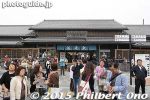
Sawara is a National Important Traditional Townscape Preservation District (重要伝統的建造物群保存地区) along the Ono River near JR Sawara Station (Narita Line).
|
|
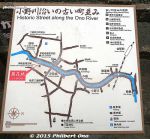
Map of the traditional townscape along the Ono River. I started from the Kaiun Bridge on the right of this map.
|
|
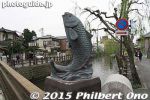
Leaping carp or maybe sea bream.
|
|
|
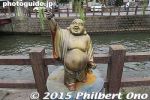
Ono River has these little statues of the Gods of Good Fortune. Sawara, Katori, Chiba.
|
|
|
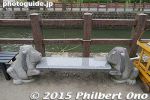
Bench
|
|

A few buildings were in need of repair.
|
|
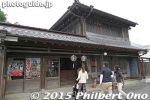
Sake merchant
|
|
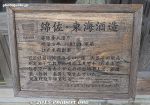
Sake merchant
|
|

Sawara, Katori, Chiba
|
|

Traditional townscape in Sawara, Katori, Chiba Prefecture.
|
|
|
|
|
|
|

Sawara has some old signs like this one for Fanta soda.
|
|
|
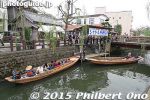
Traditional boat rides on Ono River operated by cute grandmas.
|
|
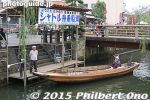
Shuttle boats (¥1,300 roundtrip) and tour boats (¥500) are busy on Ono River during the spring and autumn festival time.
|
|
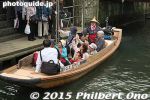
Traditional boat rides on Ono River.
|
|
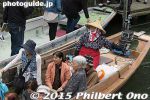
Traditional boat rides on Ono River.
|
|
|
|
|
|
|
|
|
|
|
|
|
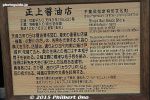
About the Shojo Soy Sauce Shop established in 1800.
|
|
|
|
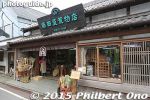
Uedaya Hardware Store
|
|
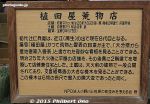
About Uedaya Hardware Store founded by a merchant from Gamo, Shiga Prefecture. Still in business.
|
|
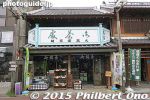
Tobacco and Tea Shop
|
|
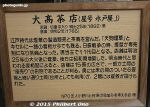
About the Tobacco and Tea Shop
|
|
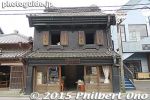
Traditional townscape in Sawara, Katori, Chiba Prefecture.
|
|
|
|
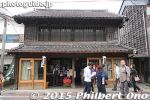
Oil merchant
|
|
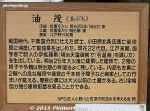
About the oil merchant
|
|
|

Jaja Bridge
|
|
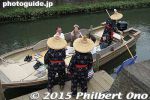
Boat dock at the other end of the river.
|
|
|
|
|
|
|

About Kinsei Japanese textile shop
|
|
|
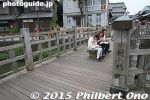
Jaja Bridge (Toyohashi Bridge) in Sawara, Chiba.
|
|

About Jaja Bridge (Toyohashi Bridge) in Sawara, Chiba.
|
|

Jaja Bridge (Toyohashi Bridge) in Sawara, Chiba has a waterfall.
|
|

Boat dock for boat rides on Ono River.
|
|
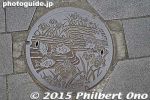
Manhole in Sawara, Katori, Chiba. River fish and irises.
|
|
|
|
|
|

About Sawara's traditional townscape.
|
|
|
|
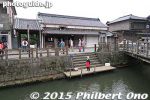
Ino Tadataka's former residence in Sawara, Chiba is open to the public.
|
|

Open hours of Ino Tadataka's former residence.
|
|

Ino Tadataka was a geographical surveyor who was the first to use modern scientific surveying methods to produce very accurate maps of Japan known as Inoh maps.
|
|
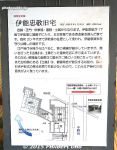
Layout of Ino Tadataka's former residence.
|
|

Monument for Ino Tadataka at his former residence.
|
|
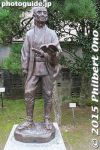
Statue of Ino Tadataka at his former residence.
|
|
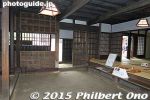
Inside the entrance foyer of Ino Tadataka's former residence. Japanese-style home.
|
|
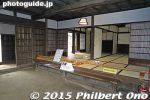
Ino Tadataka's former residence is quite spacious.
|
|

Ino Tadataka's former residence
|
|
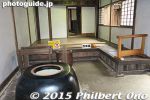
Ino Tadataka's former residence
|
|
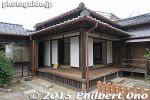
Ino Tadataka's former residence
|
|
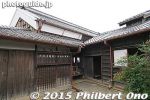
Ino Tadataka's former residence
|
|
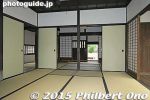
Ino Tadataka's former residence
|
|
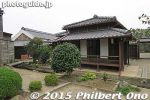
Ino Tadataka's former residence
|
|
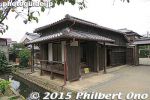
Ino Tadataka's former residence
|
|
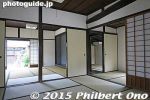
Ino Tadataka's former residence
|
|
|
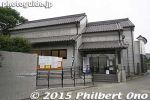
Ino Tadataka Memorial Hall, a local museum. Photography was not allowed inside.
|
|
|
|
|
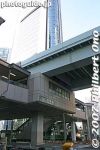
Shiodome Station
|
|
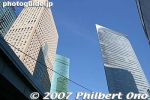
Shiodome skyscrapers
|
|
|
|
|
|
|
|
|
|









